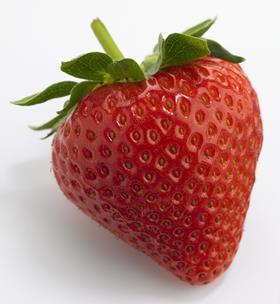
Researchers at Pittsburgh's Carnegie Mellon University's National Robotics Engineering Center have developed a plant-sorting machine that uses computer vision and machine learning technology to inspect and grade harvested strawberry plants and sort them by quality.
Up until now these were tasks that could only be done manually, but in a successful field test this autumn the machine classified and sorted harvested plants more consistently and faster than humans could, Farm and Dairy reported.
'We're looking forward to using the system,' said Liz Ponce, CEO of California's Lassen Canyon Nursery, one of five strawberry plant producers backing the project.
'All of our stakeholders feel that it has a lot of potential.'
The other sponsors are Driscoll Nursery Associates, Nor Cal Nursery Inc., Plant Sciences Inc. and Crown Nursery LLC.
These five producers make up around 85 per cent of the California strawberry plant nursery market.
During the harvest season, strawberry plant nursery farms use manual labour to sort several hundred million plants - a lengthy and costly process.
The strawberry plant sorter uses computer vision to examine harvested plants that pass on a conveyor belt. The sorter can then be taught how to classify strawberry plants of different sizes, varieties and stages of growth, far beyond the simple classification of ‘good and bad' plants.
This helps strawberry nursery farms improve quality, streamline production and deliver better strawberry plants to berry growers, which then produces better strawberries for consumers.
'The sorter can adapt to plants that vary from year to year, or even within the same growing season,' said the project manager and lead engineer Christopher Fromme. 'It's very flexible.'
Engineers conducted a 10-day field test in October where the machine was trialled under real-life conditions.
The system had to sort different plant varieties of varying levels of maturity. While in the field it sorted more than 75,000 strawberry plants at a rate of 5,000 plants per hour, several times faster than human sorting.
The National Robotics Engineering Center hopes to achieve sorting rates of 20,000-30,000 plants per hour with the final system.



